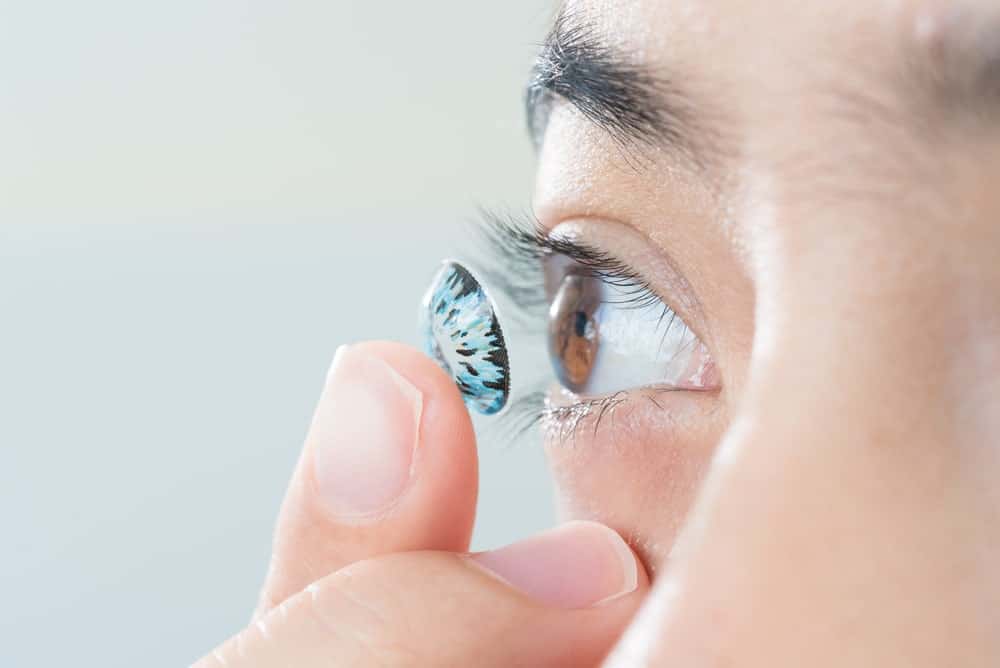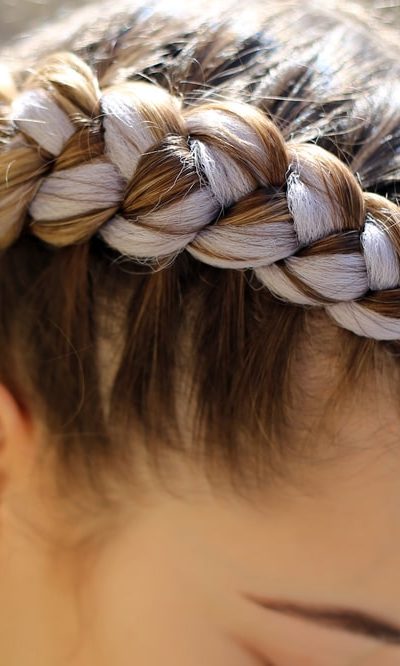 For over 130 years, contact lenses have been used as an effective vision correction method.
For over 130 years, contact lenses have been used as an effective vision correction method.
Today, they are still an incredible alternative to prescription glasses or more serious vision correction methods such as LASIK surgery.
If you’re unsure whether contact lenses are right for you, we’ve compiled this guide to help. We’ll detail everything from the features, designs, and materials used to create contact lenses.
We’ll even be diving into the latest contact lens formats, such as light-adaptive lenses, released last year in the U.S.
So, if you want to learn everything there is to know about contact lenses, read on!
Materials
When considering which type of contact would be best for your daily use, consider the lens’s material.
There are five types of lenses, and then depending on the lens type, the materials they are made of will vary.
Soft Contact Lenses
Soft lenses are made of gel-like, water-containing plastics known as hydrogels. Features of these lenses include being flexible and thin, as well as form-fitting to the front surface of the eyeball.
These contact lenses were first marketed in the 1970s. These new hydrogel lenses helped grow the usage and popularity of contacts because they are extremely comfortable.
During this same time period, the only other option for contact lenses that were available to the public was PMMA (which we’ll discuss below).
PMMA lenses were not very popular with consumers because it, on average, would take several weeks for the wearer to adapt to the lenses. Unfortunately, most people have never been successful in wearing PMMA lenses.
Silicone Hydrogel Contact Lenses
If we know that hydrogel lenses are soft lenses, we can deduce that silicone hydrogel lenses are the next level in soft lenses.
They have more pores throughout the lens, allowing more oxygen to reach the cornea.
These new and improved lenses were introduced to the public in 2002 and have maintained their status as the number one most popular contact lens since then in the United States. ![]()
Gas Permeable Contact Lenses
Gas permeable lenses, or G.P. or RGP lenses, are rigid and have a similar feel to PMMA lenses. However, unlike PMMA lenses, G.P.s are porous, which allows oxygen to flow through them.
Due to their permeability with oxygen, they manage to have a more direct fit to the eye over PMMA lenses. So, these lenses are slightly more comfortable than your typical hard lens contact.
G.P.s were first introduced in 1978 and were marketed as the upgrade replacement for PMMA lenses. There are benefits to using G.P. lenses over soft lenses, even today.
For instance, the G.P. lenses will often provide you with sharper vision, especially if you suffer from astigmatism. It will take your eyes a while to fully adjust to wearing the G.P. lenses at first.
However, once you pass the initial adaptation period, most users find them as comfortable to wear as soft lenses.
Hybrid Contact Lenses
The main reason hybrid contact lenses were designed was to combine the crisp vision quality of G.P. contacts with the initial comfortability and pliability of soft and silicon lenses.
In the center of the lens is a gas-permeable area that is extremely rigid. Surrounding that circular area is a skirt of soft or silicone lens material.
Despite the fact this lens combines the best features of two different types of contacts, there is still only a very small percentage of people that wear these in the U.S.
This is probably due in part that the lenses are difficult to fit, and they are also the most expensive the soft and silicone lenses when they need to be replaced.
PMMA
PMMA stands for polymethyl methacrylate and is made of a clear, rigid plastic material. This same material is also used as a shatterproof glass window substitute.
It is commonly marketed under trademarks such as Plexiglass, Perspex, and Lucite.
While PMMA lenses provide the best quality of vision, they do not allow oxygen through the lens and to the cornea, making it difficult for the eye to adapt.
Nowadays, these are considered old-fashioned, or more commonly known as hard contacts.
G.P. lenses have almost exclusively replaced these and are only prescribed on the rarest of occasions. 
Exploring Different Lens Designs
Both forms of soft contacts (standard and silicone hydrogel) come in several designs, depending on the intended use:
- Cosmetic contact lenses. These include your colored lenses, as well as your costume lenses.
While these can be made to help correct vision issues, their main purpose is for theatrical usage or dressing up in costumes.
- Multifocal contact lenses. These lenses are made up of different power zones that correct near or farsighted vision. This lens type will also help correct presbyopia and, at times, astigmatism.
- Toric contact lenses. These lenses combine their powers through opposing meridians of the lens to fix astigmatism, as well as nearsightedness or farsightedness.
- Spherical contact lenses. These shaped lenses will have the same amount of visual correctness throughout the entire lens for either nearsightedness or farsightedness.
If necessary, you can custom order contacts in any of these shapes if you have hard-to-fit eyes. You’ll probably want to find a hard contact option if you need corrective lenses for a cornea abnormality.
Additional Features
Myopia Control Contact Lenses
Myopia control contacts are lenses that are currently in the developmental stage. They are being developed to slow, but hopefully, completely stop, the progression of nearsightedness in young kids.
Colored Contacts
Colored lenses are not your typical contact lens. People use these when they are looking to enhance the natural color of their eyes.
However, if you want to be more daring, you can choose a color completely different from your natural eye color and give yourself a fresh new look.
Scleral lenses
Scleral lenses are G.P. lenses with a large diameter. They are specifically made to help treat keratoconus, other cornea abnormalities, and presbyopia.
Contact Lenses For Dry Eyes
Chronic dry eye is a real thing, and specific types of soft contacts are now made to help reduce the risks of dry eyes related to contact.
These lenses tend to be very permeable and pliable to your eye.
Prosthetic Contacts
Not all contacts are designed specifically to enhance eyesight. Prosthetic lenses were developed to help people who may have suffered an eye injury or whose eyes have become disfigured.
These lenses are custom-made to match the person’s other eye and make it appear the same. 
Special Effects
Special-effect lenses are typically used in theatrical productions or when people dress up in costume. The goal is to make the shape of your eye look unnatural and not human.
Common examples would be a vampire or cat-eye lens.
UV-Inhibiting Contacts
As of today, some soft lenses are manufactured to help protect your eyes from UVA rays that can cause cataracts and other long-term eye damage.
Because contacts only cover a small portion of your eyeball, it is always smart to wear protective eyewear over your eyes when out in the sun.
Custom Contacts
If you have tried all of the options of contacts available to you, but still haven’t found the right pair, you could consider ordering custom lenses.
This would be extreme as most contact users can use the currently available types.
In order to get custom lenses made, they will need to measure and scan the shape of your individual eyeballs to fulfill your vision needs.
Bifocal Lenses
If you have astigmatism or presbyopia, bifocal contacts are an advanced soft contact lens that can correct these abnormalities.
You can even remain bifocal and glasses-free until after age 40 using these lenses if you have astigmatism. 
When Should Your Contact Lenses be Replaced?
All contact lenses (especially soft ones) have a life cycle, even if properly cared for.
Depending on the exact type you use, you should frequently replace them to help prevent any build-up of bacteria that could cause eye infections or worse.
Typically, on the box of your soft lenses, there will be instructions for how often you should be changing out your old lenses with new ones.



